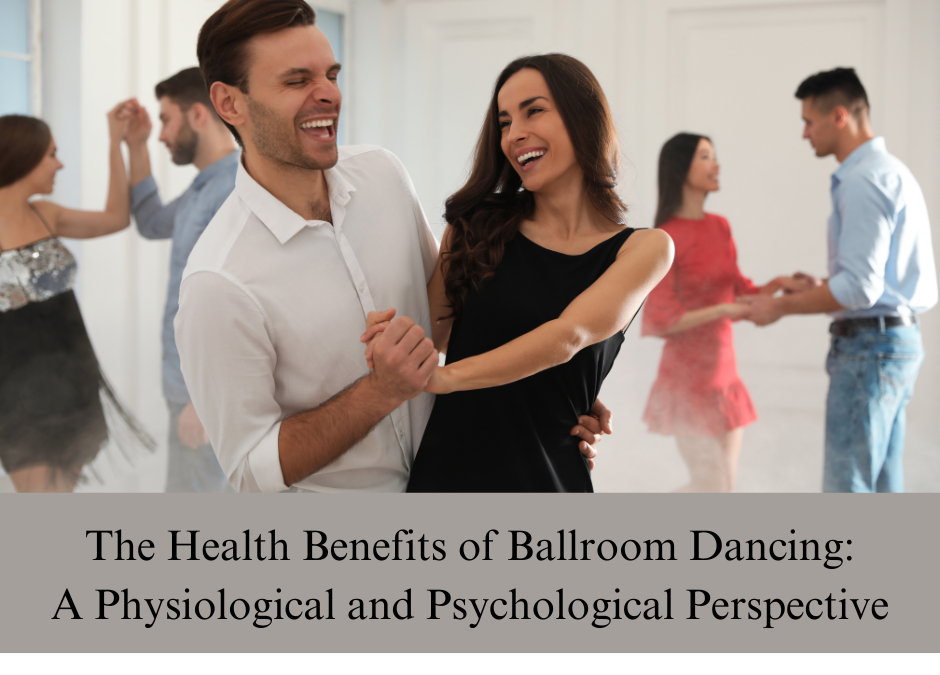Introduction:
In a world where fitness trends come and go, one timeless activity continues to stand out not only for its grace and elegance but also for its numerous health benefits—ballroom dancing. Beyond the dazzling moves and glamorous attire, ballroom dance offers a unique combination of physiological and psychological advantages that contribute to overall well-being. Let’s explore the dance floor and discover how waltzing and cha-cha-ing can positively impact your mind and body.
Physiological Benefits:
- Cardiovascular Health: Ballroom dancing is more than just a series of steps; it’s a cardiovascular workout in disguise. Whether gliding through a waltz or quickstepping to a jive, your heart rate increases, promoting better circulation and cardiovascular health. Regular dancing can contribute to improved stamina and a healthier heart.
- Muscle Tone and Endurance: Engaging in ballroom dance involves a variety of movements that target different muscle groups. From the core-strengthening steps of the tango to the legwork in the salsa, dancers develop increased muscle tone and endurance. This full-body workout not only enhances physical appearance but also supports functional strength in everyday activities.
- Balance and Coordination: The intricate footwork and precise movements required in ballroom dancing promote enhanced balance and coordination. These skills are crucial for preventing falls, especially as we age. Dancing challenges the body to maintain stability, improving balance and overall spatial awareness.
Psychological Benefits:
- Stress Reduction: The rhythmic patterns and expressive nature of ballroom dance create a perfect escape from the stresses of daily life. As you immerse yourself in the music and movement, stress hormones decrease, and the release of endorphins—the body’s natural mood lifters—increases. This mental reset can lead to improved emotional well-being.
- Social Connection: Ballroom dancing is inherently social, fostering connections with others who share a passion for movement and music. Social interactions during dance classes or events provide a sense of community and belonging, reducing feelings of isolation and loneliness.
- Cognitive Benefits: Learning and mastering dance routines require mental focus and memory recall. Engaging in ballroom dance regularly can help sharpen cognitive functions, enhance memory, and improve overall mental acuity. It’s a fun and engaging way to keep the mind active and agile.
Conclusion:
Beyond the glitz and glamour, ballroom dancing emerges as a holistic activity that contributes significantly to both physical and mental well-being. Whether you’re a seasoned dancer or a beginner taking your first steps, the health benefits of ballroom dancing make it a delightful and fulfilling pursuit. So, put on your dancing shoes, feel the rhythm, and dance your way to a healthier, happier you.

